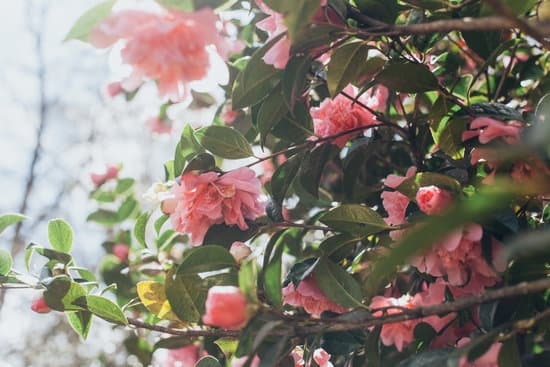Are you looking for good ideas for gardens? Your outdoor space has the potential to become a stunning oasis with the right planning and creativity. From maximizing space and sunlight to choosing the perfect plants and incorporating landscaping elements, there are endless possibilities to turn your garden into a beautiful sanctuary.
Creating a garden layout that maximizes both aesthetics and functionality is essential. Whether you have a small urban balcony or a spacious backyard, careful planning can help you make the most of your space. Selecting the right plants for your garden type, whether it’s flowers, vegetables, or herbs, can also contribute to its overall beauty and success.
Incorporating landscaping elements such as pathways, ponds, and sculptures can add depth and interest to your garden design. DIY projects can further personalize your outdoor space with handmade decor. Additionally, adopting sustainable gardening practices like composting and organic pest control not only benefit the environment but also contribute to the long-term health of your garden.
Planning Your Garden Layout
When it comes to creating a successful garden, one of the key factors to consider is the layout. Maximizing space and sunlight in your garden can greatly impact the growth and health of your plants. Here are some tips to help you plan your garden layout effectively:
- Assess Your Available Space: Begin by taking a look at the area where you plan to create your garden. Measure the dimensions and consider any existing structures or obstacles that may impact your layout.
- Consider Sunlight Exposure: Different plants require varying amounts of sunlight to thrive. Take note of where the sun shines brightest in your garden throughout the day and plan accordingly. Position taller plants towards the north side of your garden to prevent shading on smaller plants.
- Utilize Vertical Space: If you have limited ground space, consider vertical gardening techniques such as trellises, hanging baskets, or vertical planters. This will allow you to grow more plants without taking up additional ground space.
Maximizing space and sunlight in your garden not only ensures that your plants receive adequate light for photosynthesis but also helps create a visually appealing and functional outdoor space. By carefully planning your garden layout, you can optimize every inch of space and create a thriving and beautiful garden that reflects your unique style and personality.
Remember, experimenting with different layouts and plant arrangements is part of the fun when it comes to gardening. Don’t be afraid to get creative and try out new ideas for gardens – you may discover a layout that works even better than you anticipated. By incorporating these tips into your planning process, you can create a garden that not only looks great but also provides a sanctuary for relaxation and enjoyment.
Choosing the Right Plants
When it comes to creating a beautiful and thriving garden, choosing the right plants is essential. Whether you have a small balcony garden, a spacious backyard, or anything in between, selecting the appropriate flowers, vegetables, and herbs can make all the difference. One of the key considerations when picking plants for your garden is to take into account the local climate and soil conditions. This ensures that your chosen plants will flourish and thrive in their environment.
For flower enthusiasts, options are abundant based on personal preferences such as color, fragrance, and blooming season. Popular choices for colorful blooms include roses, tulips, sunflowers, and daisies. For those looking to attract pollinators like butterflies and bees, planting lavender, coneflowers, and bee balm can create a vibrant ecosystem in your garden. Additionally, incorporating herbs like lavender and rosemary not only adds visual interest but also serves practical purposes such as culinary use or natural pest repellents.
In addition to flowers, incorporating vegetables into your garden can be both rewarding and practical. From tomatoes and cucumbers to bell peppers and zucchinis, growing your own produce can provide a fresh supply of organic fruits and vegetables right at your fingertips.
Herbs like basil, mint, parsley are easy to grow and maintain while adding flavor to home-cooked meals. By carefully selecting a mix of flowers, vegetables, and herbs suited to your garden type and personal preferences allows you to create a diverse ecosystem that enhances the beauty of your outdoor space.
| Plants | Types |
|---|---|
| Roses | Flowers |
| Tomatoes | Vegetables |
| Lavender | Herbs |
Incorporating Landscaping Elements
When it comes to creating a beautiful and inviting garden, incorporating landscaping elements is key to enhancing the overall look and feel of your outdoor space. Pathways can not only provide practical access throughout your garden but also add visual interest and structure to the landscape.
Consider using a variety of materials such as gravel, stepping stones, or even reclaimed wood to create unique pathways that complement the style of your garden. Curving paths can create a sense of mystery and encourage exploration, while straight paths can lead the eye towards focal points like ponds or sculptures.
Ponds are another great addition to any garden, providing a tranquil and peaceful atmosphere for both humans and wildlife. Whether you opt for a small water feature with aquatic plants or a larger koi pond, water elements can bring a sense of serenity and balance to your outdoor space. Be sure to consider the location of your pond in relation to sunlight and shade, as well as factors like maintenance and safety for children or pets.
Sculptures are an excellent way to add personality and artistic flair to your garden. From traditional statues to contemporary abstract pieces, sculptures can serve as focal points or accents throughout the landscape. Consider choosing pieces that complement the overall style of your garden design and reflect your personal taste.
Whether you go for classical Greek-inspired sculptures in a formal garden or quirky modern pieces in a whimsical garden, adding sculptures can elevate the aesthetic appeal of your outdoor oasis. By incorporating pathways, ponds, and sculptures into your garden design, you can create a cohesive and visually stunning outdoor space that reflects your personality and style.
DIY Garden Projects
Transforming your garden into a personal oasis can be easily achieved through DIY projects that add unique touches and reflect your personality. Here are some good ideas for gardens that you can create yourself:
- Create a vertical garden using recycled materials such as old pallets or crates. This not only saves space but also adds an eye-catching element to your garden.
- Build a birdhouse or bird feeder to attract feathered friends to your outdoor space. Not only does this provide a charming addition to your garden, but it also helps support local wildlife.
- Add a touch of whimsy with handmade garden markers for your plants and herbs. Get creative with materials like painted rocks, wooden spoons, or even recycled corks.
In addition to these DIY projects, consider incorporating personalized stepping stones with handprints from family members or mosaic designs made from broken tiles. These details not only add character to your garden but also create lasting memories for years to come.
To further enhance the ambiance of your outdoor space, consider crafting hanging planters out of macrame or upcycling old containers into unique plant pots. By infusing your creativity and personal touch into these good ideas for gardens, you can truly make your garden a reflection of yourself while enjoying the process of creating something special.
Sustainable Gardening Practices
Another sustainable practice to consider is rainwater harvesting, which involves collecting and storing rainwater for later use in your garden. This method helps conserve water, reduces your utility bills, and provides plants with untreated water free from chlorine and other chemicals found in tap water. You can set up a simple rain barrel system connected to a downspout or invest in more advanced rainwater collection systems depending on your needs and budget.
In addition to composting and rainwater harvesting, organic pest control is key to maintaining a healthy garden without relying on harmful chemicals. Introducing beneficial insects like ladybugs or parasitic wasps can help control pest populations naturally. You can also make DIY insecticidal soaps using simple ingredients like soap and water to deter common garden pests. By adopting these sustainable gardening practices, you can create a thriving garden ecosystem that benefits both your plants and the environment.
| Sustainable Gardening Practices | Benefits |
|---|---|
| Composting | Recycles organic material, enriches soil with nutrients |
| Rainwater Harvesting | Conserves water, reduces utility bills, provides untreated water for plants |
| Organic Pest Control | Maintains a healthy garden without harmful chemicals |
Seasonal Garden Maintenance Tips
Spring
As the weather warms up and plants start to bloom, spring is a crucial time for garden maintenance. Start by clearing out any debris left over from winter, such as fallen leaves or branches. This will allow your plants to receive optimal sunlight and air circulation. Consider applying a layer of compost or fertilizer to replenish nutrients in the soil after the dormant winter months. Additionally, trim back any dead or overgrown branches to encourage new growth.
Summer
During the hot summer months, it’s essential to stay on top of watering your garden regularly, especially during dry spells. Mulching around plants can help retain moisture in the soil and reduce the need for frequent watering. Keep an eye out for pests and diseases that thrive in warm weather, such as aphids or powdery mildew, and address them promptly. Deadhead flowers to promote continuous blooming and prune any flowering shrubs or trees that have finished blooming.
Fall
As temperatures start to cool down in fall, it’s time to prepare your garden for the upcoming winter months. Begin by cleaning up your garden beds and removing any dead foliage to prevent diseases from overwintering. Plant bulbs for spring blooms and divide any perennials that have become overcrowded. Consider adding a layer of mulch to protect plant roots from freezing temperatures and insulate them throughout the winter. Lastly, bring sensitive plants indoors or provide adequate protection if necessary.
By following these seasonal garden maintenance tips, you can ensure that your garden remains healthy and thriving year-round. Each season requires different tasks to keep your garden looking its best, so staying proactive with maintenance will pay off in the long run. Remember that gardening is a labor of love, but with dedication and attention to detail, you can create a beautiful outdoor space that brings joy and tranquility all year long.
Creative Garden Themes
Cottage Gardens: A Charming and Traditional Choice
Cottage gardens are known for their romantic and whimsical charm, often featuring a mix of colorful flowers, herbs, and vegetables. These gardens typically have a relaxed and informal layout, with an emphasis on creating a cozy and inviting atmosphere. To create a cottage garden, consider planting a variety of old-fashioned favorites like roses, lavender, daisies, and peonies. Add in some climbing vines, such as clematis or honeysuckle, to create height and interest in your garden.
Modern Minimalist Designs: Sleek and Sophisticated
For those who prefer clean lines and simplicity in their outdoor space, modern minimalist designs offer a sleek and sophisticated approach to garden aesthetics. Opt for geometric shapes, neutral color palettes, and minimalist plantings to achieve this contemporary look. Incorporate elements like concrete planters, steel sculptures, and sleek outdoor furniture to enhance the modern feel of your garden. Consider using low-maintenance plants like succulents, ornamental grasses, and evergreen shrubs to keep the design simple yet impactful.
Combining Themes for a Unique Garden Experience
If you’re feeling adventurous, why not combine elements from both cottage gardens and modern minimalist designs to create a unique garden theme that reflects your personal style? Mix vintage-inspired accessories with sleek furniture pieces or integrate traditional flowering plants with architectural succulents for an eclectic look.
Experimenting with different styles can lead to unexpected but beautiful results in your garden design. Remember that the key is to have fun and let your creativity shine through in every aspect of your outdoor space.
Conclusion
In conclusion, creating a beautiful and vibrant garden is not just about planting flowers and vegetables. It involves thoughtful planning, choosing the right plants, incorporating landscaping elements, engaging in DIY projects, practicing sustainable gardening methods, and maintaining your garden throughout the seasons. By following the tips and ideas outlined in this article, garden enthusiasts can turn their outdoor spaces into stunning retreats that reflect their personal style and creativity.
Whether you have a small balcony or a spacious backyard, there are endless possibilities when it comes to designing a garden that suits your tastes and preferences. From traditional cottage gardens with an abundance of colorful blooms to modern minimalist designs with clean lines and sculptural elements, there is a garden theme for every style.
The key is to experiment with different ideas, mix and match plants and materials, and let your imagination run wild to create a truly unique outdoor oasis.
So go ahead and dive into your garden projects with confidence and creativity. Remember that gardening is not just about achieving visual appeal but also about fostering a deeper connection with nature, promoting environmental sustainability, and reaping the rewards of growing your own food. With dedication, patience, and a touch of ingenuity, you can transform any outdoor space into a flourishing haven that brings joy and tranquility to your everyday life. Happy gardening.
Frequently Asked Questions
How Do You Make a Unique Garden?
A unique garden can be created by incorporating uncommon plant varieties, using creative landscaping features, and adding personal touches that reflect your style and personality. Mixing different colors, textures, and heights of plants can also contribute to a one-of-a-kind garden.
What Is a Good Garden Plan?
A good garden plan involves considering factors such as the layout of your space, the types of plants that thrive in your climate, and the amount of maintenance you are willing to commit to. It’s important to create a balance between aesthetics and functionality while ensuring that the plants have enough space to grow.
How Do You Make a Beautiful Low Maintenance Garden?
To create a beautiful low-maintenance garden, choose plants that require minimal care such as native species or drought-tolerant varieties. Utilize mulch to suppress weeds and retain moisture in the soil, reducing the need for frequent watering. Incorporate permanent hardscaping elements like pathways or rock gardens for added visual appeal with little upkeep required.

Welcome to my gardening blog! I am passionate about plants and enjoy sharing my knowledge and experiences with others. In this blog, I will write about everything related to gardening, from tips on how to get started to updates on my own garden projects.





